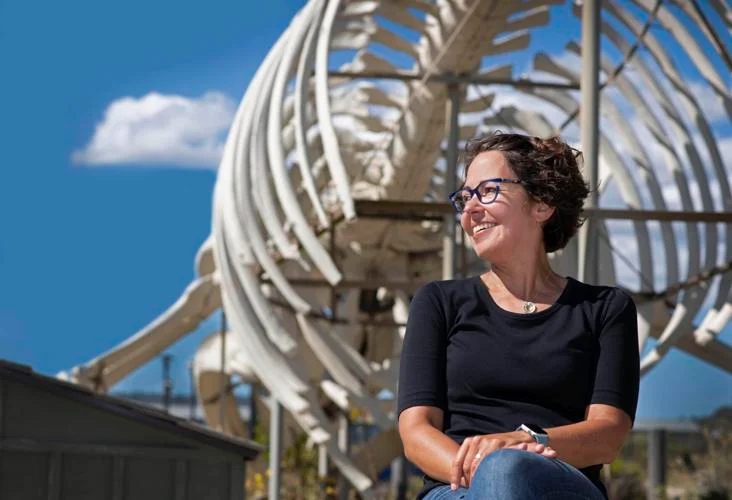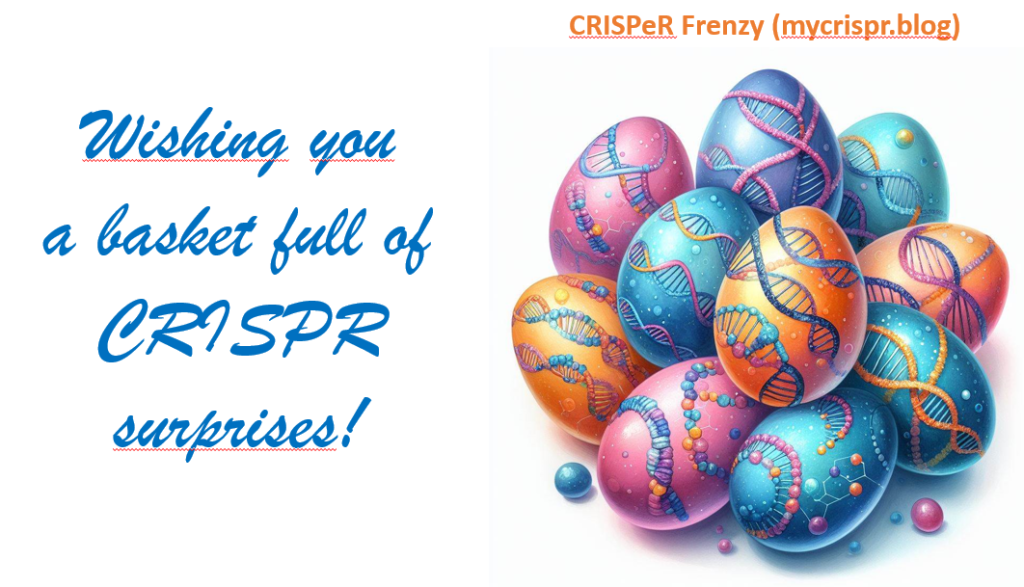Natural evolution has had four billion years to experiment with living matter. From now on, artificial intelligence will also help expand the catalog of possible and desirable molecules. These so-called ‘language systems’ are no longer limited to producing text or images, as exemplified by ChatGPT or Midjourney. They can now be instructed and utilized to design new proteins, thereby potentially creating improved CRISPR scissors.
Continue readingCategory Archives: Crazy4Crispr
Resurrecting extinct species _ where do we stand?

Plans to genetically bring mammoths and other vanished animals back to life have scientific stakes far beyond the imagery of Jurassic Park
Continue readingHappy spring break 🐣
Image

Live Dance Performance – The Choreography of CRISPR

If you are in Cambridge, Massachusetts, don’t miss the live dance performance to be held at the MIT Museum on March 16th. The Choreography of CRISPR is all about “twisting, cutting, inserting, copying, repeating, palindromes, and cluster”, “an intricate dance of spiraling and folding patterns” (you can watch a minute from the première on the facebook page of the NYC-based contemporary dance company Pigeonwing Dance; choreography by Gabrielle Lamb, original music by James Budinich).
Patient-pioneer in the pantheon of medicine

According to Fyodor Urnov, she should be added to “the pantheon of names inscribed in golden letters in the history of biomedicine.” That list includes other pioneering patients such as James Phipps (the boy vaccinated by Edward Jenner), Albert Alexander (the first human treated with penicillin), Louise Brown (the first test tube baby) and Emily Whitehead (the first recipient of CAR-T cells). Now the CRISPR Journal made the unusual decision to put her on the cover.
Continue readingCrisp Winter Holidays!

Grateful for the award!

First reactions to the first CRISPR therapy!
Brilliant Minds: David Liu & Sammy Basso
The first is a CRISPR innovator (base editing and prime editing came out of his lab). The second has a genetic disease that causes him to age prematurely (progeria) and has taken his destiny into his own hands by becoming a biologist. They are each other’s inspiration and in this video they tell us why.
The CRISPR way to parthenogenesis

“In the animal world there are species naturally capable of bringing forth new life from an unfertilized egg cell, always or under exceptional circumstances (a case was recently discovered in a female crocodile). But with the help of biotechnology, it has become possible to bypass the male contribution even in species that have always relied on sexual reproduction. By manipulating oocytes in vitro, Chinese researchers succeeded in mice. The latest breakthrough was announced in Current Biology: using CRISPR to turn on and off different combinations of genes, a Cambridge team was able to identify the molecular basis of parthenogenesis in the fruit fly and artificially transfer this trait into a strain that did not have it. After being equipped with the right genetic makeup, some females gave birth to other females, which were also able to reproduce in the absence of males. Of course, we are far from any application on the human species, for both technical and ethical reasons, but there are no risks in exploring with imagination the theoretical possibility that women might be able to procreate on their own.” And this is precisely what I write about in my column today in magazine 7/Corriere della sera.














